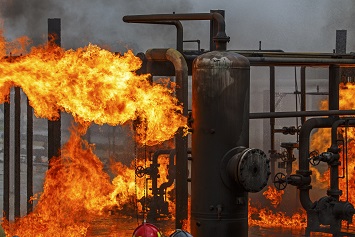The Occupational Safety and Health Administration (OSHA) has cited Philadelphia Energy Solutions for serious violations of the process safety management (PSM) standard and proposed $132,600 in penalties.
The citations and penalties stem from a June 21, 2019, fire and subsequent explosions at the company’s Girard Point Refinery Complex in Philadelphia, Pennsylvania. The agency alleges 10 serious violations of the PSM standard.
Deficiencies in Philadelphia Energy Solutions’ (PES) PSM program included failing to establish or implement written procedures, insufficient hazard analysis, and inadequate inspection of process equipment for highly hazardous chemicals used in the process, OSHA inspectors found.
“OSHA’s Process Safety Management standard requires that employers conduct regular inspections to ensure process equipment meets industry standards,” OSHA Area Director Theresa Downs said in an agency statement.
“When employers fail to evaluate and address potential hazardous conditions associated with chemical processes, catastrophic events such as this can occur,” Downs said.
There were no fatalities or serious injuries in the incident at the Girard Point Refinery Complex.
The Process Safety Management of Highly Hazardous Chemicals standard (29 CFR 1910.119) contains requirements for the management of hazards associated with processes using highly hazardous chemicals. Hazardous chemicals at the Girard Point Refinery included hydrofluoric acid and flammable hydrocarbons.
OSHA has a PSM Covered Chemical Facilities National Emphasis Program that includes petroleum refineries.
CSB Preliminary Findings
The U.S. Chemical Safety and Hazard Investigation Board (CSB) still has an open investigation into the incident. CSB October 16, 2019 released a factual update of preliminary findings. The board found that a pipe elbow in the refinery’s alkylation unit had corroded to half the thickness of a credit card and burst, releasing process fluid that included over 5,000 pounds of hydrofluoric acid.
The board also concluded:
- The piping was susceptible to corrosion from the hydrofluoric acid in the process fluid;
- The elbow that ruptured corroded faster than the rest of the piping in that part of the process;
- While pipe thickness in this section of the unit was periodically measured to monitor corrosion rates, the thickness of the elbow that failed had not been monitored for corrosion.
- The piece of piping that failed had a high nickel and copper content—carbon steel with a higher percentage of nickel and copper corrodes at a faster rate than carbon steel with a lower percentage when used in a process with hydrofluoric acid;
- A secondary event at the refinery occurred when a V-1 Treater Feed Surge Drum ruptured, launching a fragment of the vessel weighing 38,000 pounds across the Schuylkill River; and
- Two other fragments landed within the PES Refinery.
The piping circuit containing the ruptured elbow was installed in about 1973 and met 1965 standards that did not specify nickel (Ni) and copper (Cu) composition requirements for piping.
Corrosion also was a cause in other incidents CSB has investigated—a January 12, 2009, flash fire and explosions at the Silver Eagle Refinery in Woods Cross, Utah and August 6, 2012, fire at the Chevron Refinery in Richmond, California. The citations in the wake of the 2012 Chevron Refinery fire resulted in a $1 million settlement.

